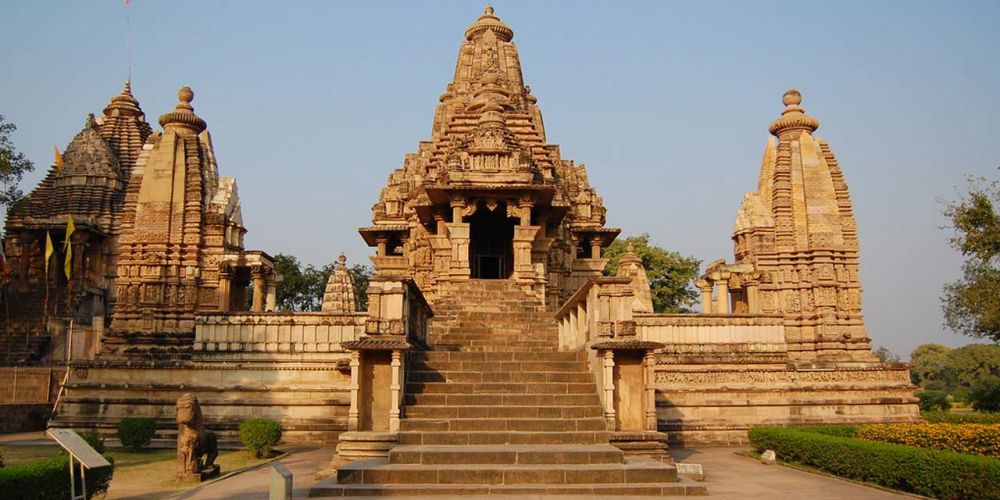

Nestled in the heart of Khajuraho, Madhya Pradesh, the Lakshmana Temple stands as an enduring testament to the architectural and spiritual genius of medieval India. Dating back to the 10th century, it is a shining example of the prolific creativity that flourished during the reign of the Chandela dynasty.
Dedicated to Lord Vishnu, the Lakshmana Temple is one of the earliest and most magnificent temples in Khajuraho. It was built by the Chandela ruler Yashovarman around 930-950 AD, at a time when temple architecture in northern India was at its pinnacle. The temple's history is intricately tied to the blossoming of regional dynastic power and the patronage of art and culture that was characteristic of the period.
The temple is renowned for its intricate carvings and sublime architecture, which epitomize the classical style of the Chandela dynasty's temple design. The exquisite sculptures that adorn the temple walls include not only gods and goddesses but also a profusion of secular and erotic imagery, reflecting the inclusive and celebratory nature of Chandela society and its nuanced approach to spirituality.
Khajuraho, with the Lakshmana Temple as one of its crowning glories, has evolved into a world-class tourist destination, attracting scholars, spiritual seekers, and art enthusiasts alike. Tourism in Khajuraho skyrocketed after the group of monuments, to which the Lakshmana Temple belongs, was designated a UNESCO World Heritage Site in 1986. This recognition contributed to better conservation efforts and increased international visibility.
Recent trends in Khajuraho tourism highlight a surge in interest towards experiential travel and sustainable tourism practices. Visitors are not only looking to admire the ancient architecture but also to immerse themselves in the local culture and traditions. Initiatives such as light and sound shows, dance festivals, and local crafts exhibitions have been integrated to enhance the visitor experience.
Moreover, digital technology, such as augmented reality and virtual tours, has begun to reshape the way tourists engage with the Lakshmana Temple's history and architecture, making it accessible to a global audience unable to travel to the site in person.
Ensuring that the Lakshmana Temple withstands the test of time, conservationists and historians work meticulously to preserve its original grandeur while facilitating an enlightening experience for visitors. Efforts to maintain the integrity of the site while accommodating tourists ensure that Khajuraho's legacy as a center for artistic and spiritual exploration continues into the future.
As Khajuraho's star attraction, the Lakshmana Temple remains a sterling example of India's ancient heritage and the transformative power of tourism in bringing such historical treasures into the limelight for people all around the world to cherish and learn from.